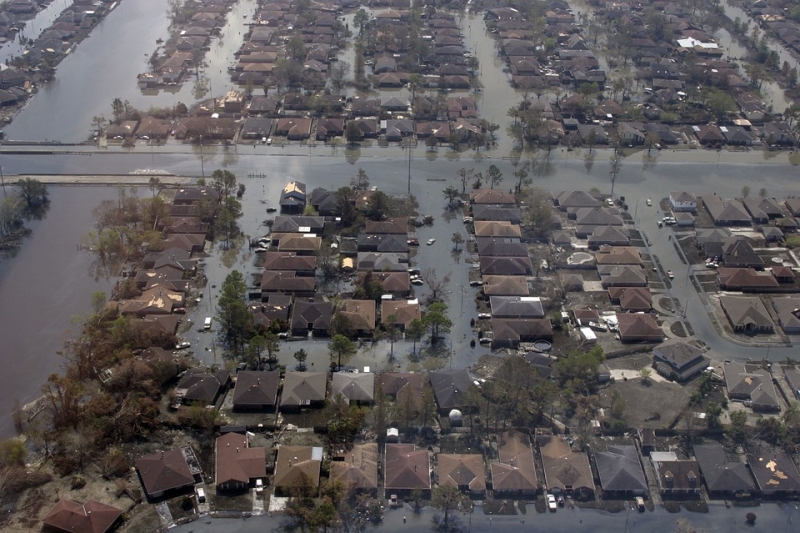The usefulness of Unmanned Aerial Systems (UAS) and Unmanned Aerial Vehicles (UAV) as an emergency response tool has received abundant public attention through intense media coverage of recent hurricane impacts and their aftermath. The dramatic imagery captured by UAS in the wake of Hurricanes Florence and Michael exemplifies how effective these devices are in capturing images and information from hard-to-reach or dangerous areas that are inaccessible to ground personnel. These situations make it important to understand the rules and regulations for operating a UAS, especially in the aftermath of a natural disaster. Unauthorized use of UAS in these areas may hinder search and recovery efforts and should be avoided in these areas. Operating a safe UAS program offers the benefit of instant visualization and mapping to a wide variety of response efforts.
UAS have demonstrated superior value in assessing impacts from natural disasters and as the technology improves, we will see increased implementation of these vehicles in these situations. What makes them valuable for impact assessment also makes them a proper fit in other areas of work. For example, UAS provide a view of areas that are not easy to access or could be dangerous to access in other environmental or natural disasters such as earthquakes, toxic or radioactive sites, or sites inundated by flooding.
 UAS have been used extensively on construction projects to capture the elevated or bird’s-eye views of a building construction site. The value of using UAS for monitoring construction progress, safety, and design remotely is that visualization of many construction site areas can be performed quickly and without placing humans in an unsafe environment.
UAS have been used extensively on construction projects to capture the elevated or bird’s-eye views of a building construction site. The value of using UAS for monitoring construction progress, safety, and design remotely is that visualization of many construction site areas can be performed quickly and without placing humans in an unsafe environment.
The benefit of providing an “Eye in the Sky” for our projects is limited only by our imaginations. We have used UAS successfully in inspection of stacks, monitoring of endangered species, observing the effectiveness of dust suppression, and inspection of infrastructure projects. This technology can be deployed for numerous monitoring and visualization tasks where it is both safe and legal to fly; and where location access is difficult or adverse to in-person inspection.
UAS with thermal imaging sensor attachments are an example of how they are a useful mechanism to enhance mapping technology. UAS with thermal imaging sensors are currently used to detect leakages in both natural and built environments. These sensors collect data that can be mapped to show the spatial relationship of temperatures. The data can show areas in the natural environment where groundwater seeping occurs or where heat losses occur in buildings.
As the technology progresses, numerous types of sensors are being included on the UAS. This includes LiDAR sensors, thermal imaging sensors, chemical sensors, hyperspectral sensors, and specialty sensors. These allow for greater detailed mapping to be performed and incorporating the data into software systems such as Geographic Information Systems (GIS) and Computer Aided Drafting (CAD) systems. Using UAS as a mapping or a data collection platform is a complex task and may be subject to state, local, and federal regulations. Data collection may require additional resources such as a licensed surveyor, licensed photogrammetrist, or both.
UAS provide a means to perform mapping in situations that may have previously been cost-prohibitive, particularly where the type of collection is done by other airborne platforms such as helicopters and fixed-wing aircraft. UAS platforms also provide a mechanism to fly an array of sensors closer to the ground as opposed to methods that require ground contact.
Understanding the regulations that are involved with performing these UAS services, as well as understanding how to insure the devices and operators, is key. For example, the recent FAA Reauthorization Act signed by President Trump has implications for UAS operators. It is important to keep current on regulatory changes and what their potential impacts are.
Safe operation of a UAV is paramount to sustaining successful program and commercial use of a UAV for any project. Vehicles should be operated using only licensed, insured, and trained pilots. With recreational UAV use becoming more and more pervasive, it is increasingly important to recognize the differences between recreational use versus commercial use. A comprehensive health and safety plan should always accompany the flight planning procedures and be part of a commercial UAS program.
At AECOM, we are adopting UAS as part of our comprehensive solutions portfolio. Our program has been built upon a culture of safe operation and rigorous pilot vetting. AECOM ensures that UAS use is well-planned but flexible enough to evolve with safe operating practices and procedures in order to adjust to unforeseen challenges and opportunities. Across the globe, AECOM has utilized UAS to perform visualization, mapping, and monitoring on a wide variety of environmental, construction, and utility projects. Our investment in and use of this evolving technology is likely to increase over time.
